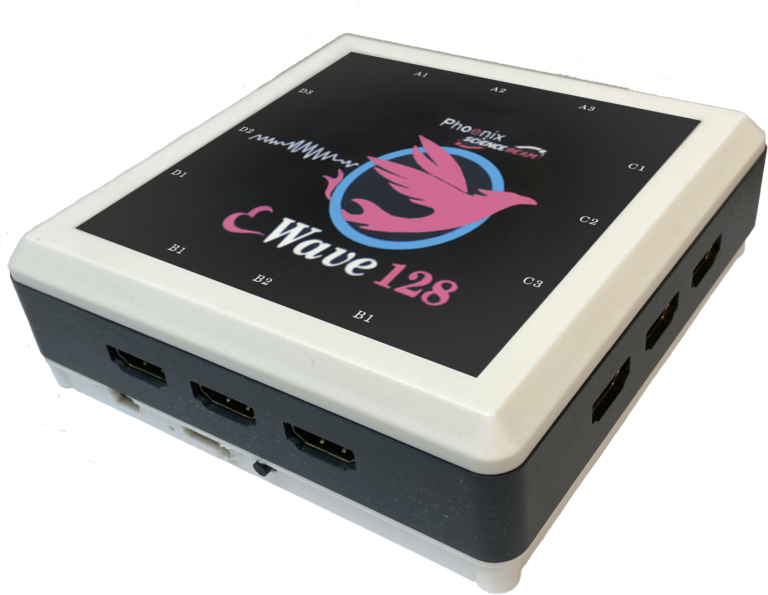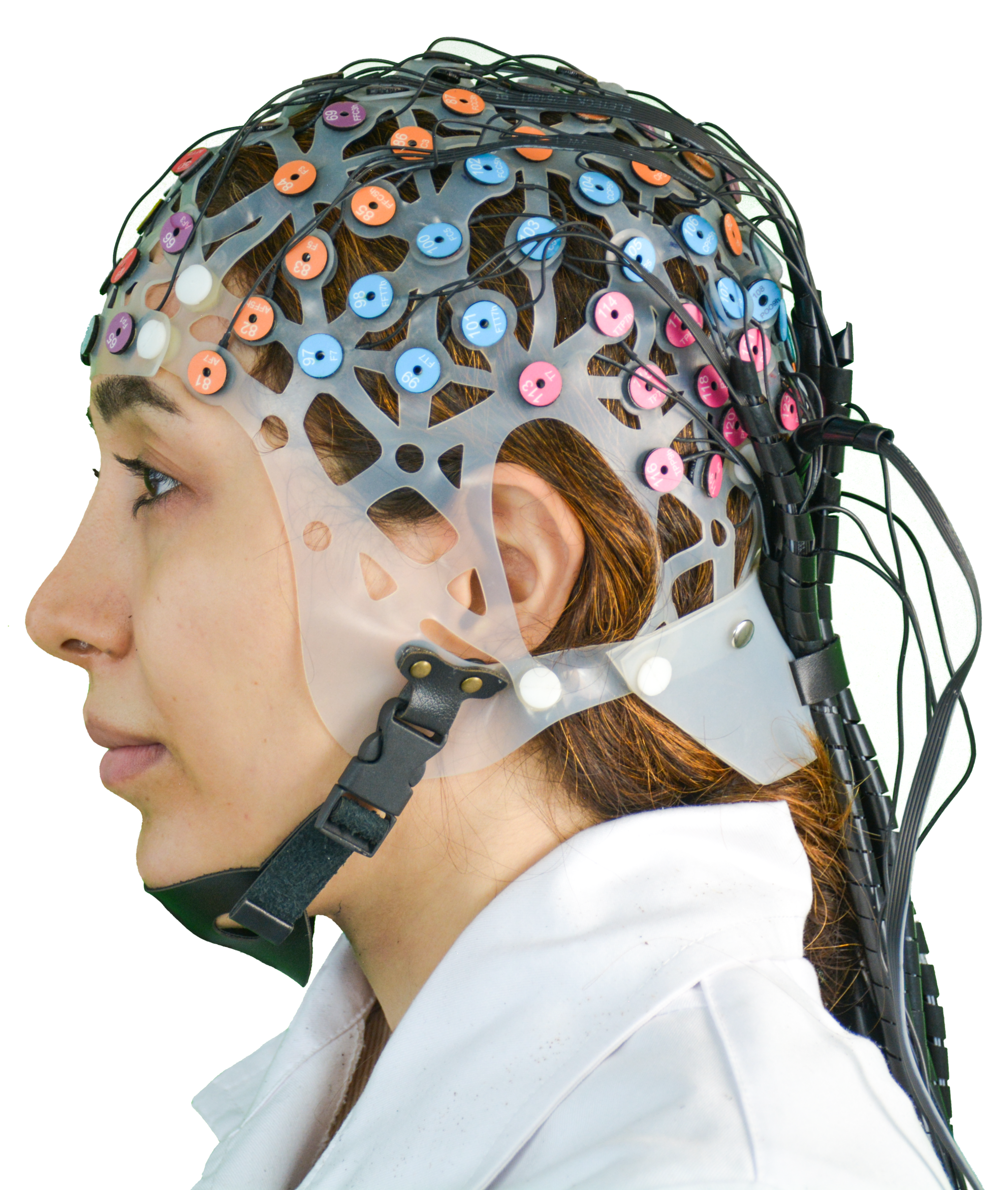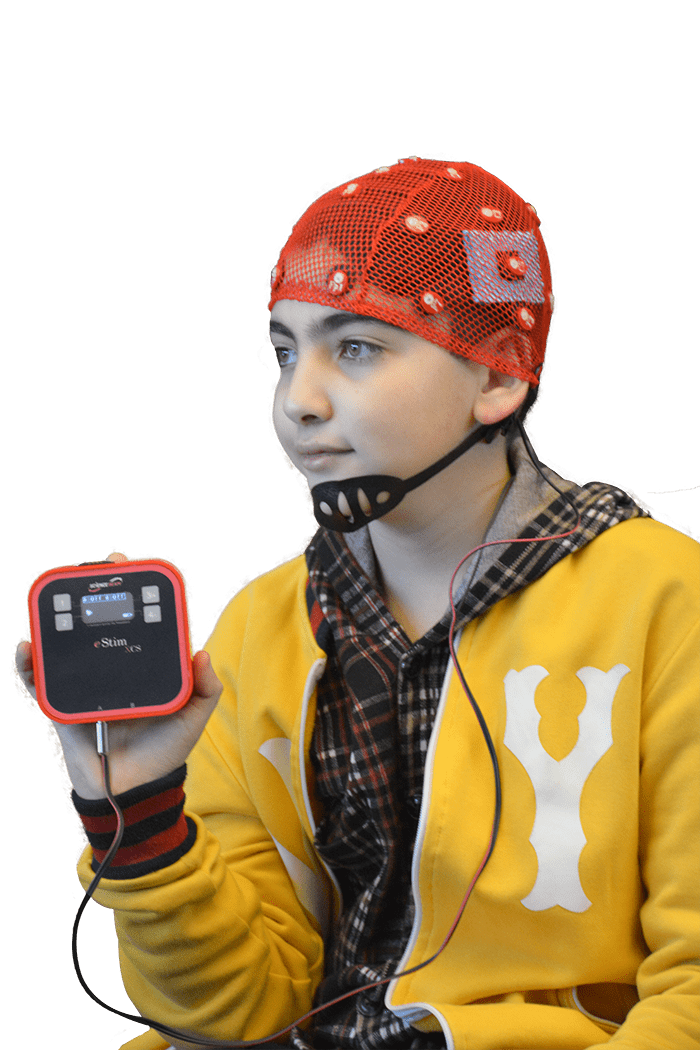
eWave+ is a compact, portable, and lightweight bio-signal amplifier designed specifically for research purposes. The eWave+ amplifier provides all the resources needed for EEG/ERP studies in hospital EEG labs, or EEG/ERP labs and research centers. Pre-amplifiers, amplifiers, signal conditioners, analog-to-digital conversion, and an impedance check are all packed solidly into this small, lightweight, portable, and reliable package.
eWave+ is a high-performance and high-accuracy biosignal amplifier for the acquisition and processing of physiological signals. Using eWave+, you can record physiological activity from the brain, eyes, heart, and muscles. Besides, using the extra Biosense module, you can record further physiological activities, including respiration, Galvanic Skin Response (GSR), temperature, and many other physiological and physical parameters.

Size: 120 (L) × 120 (W) × 41 (H)
Weight: 318 gr
Supply: 5V DC, Lithium battery
Bandwidth: 200 Hz
Noise level: less than 0.5 μνrms
Amplifier type: DC, differential
Input impedance: 109 Ω
Safety class: ǁ
Standards: IEC, CE, ISO13485, ISO9001

Transcranial Magnetic Stimulation (TMS), which is a non-invasive form of brain stimulation, uses a changing electromagnetic field to cause electric current at a specific area of the brain. Due to the latest developments, simultaneous recording of EEG and TMS has become possible. The combination of TMS with simultaneous EEG provides the possibility to non-invasively probe the brain’s excitability in real-time.
Transcranial Direct Current Stimulation (tDCS) is a form of brain stimulation, where very low levels of constant current are delivered to specific areas of the brain. Basically, tDCS is developed to help patients with brain injuries or psychological conditions such as depression. The combination of tDCS with simultaneous EEG provides valuable information about tDCS mechanisms. The combined EEG-tDCS system can also be used for the preventive treatment of neurological conditions. eWave+ device has provided a simultaneous recording of EEG with TMS and tDCS.

ERPs (Event-Related Potentials) are small Changes in scalp recorded EEG that are time-locked to an onset of an auditory or visual stimulus. ERP is used to investigate the process of information in the brain and helps capture neural activity related to both sensory and cognitive processes.
The brain responses to a single stimulus are not usually apparent in the EEG recording of a single trial. To see the brain’s response to a stimulus, many trials must be conducted and the results must be averaged together. So, the random brain activity gets averaged out and the relevant waveform, called the ERP, remains.
Giving consideration to the high sampling rate per channel, the eWave-Pro can be used to record evoked potentials as well as EEG signals. The 16-bit trigger input allows the detection of a large number of markers from visual and acoustic stimulation modalities.
Besides the eWave-Pro, we offer a great ERP set, enabling you to get the most out of your EEG/ERP package. This ERP set includes:
While recording ERPs, the lag between each target stimulus onset and the related potential peak is not constant for the different stimulus repetitions, which is caused by latency jitter. The latency jitter, which is a long-standing but still under-explored problem, is caused by the CPU, motherboard, and graphic card. Notably, if strong enough amounts of latency jitter across conditions, may suppress true condition effects in amplitude. Therefore, it is imperative to investigate the effects of latency jitter and find ways of correcting it.
To prevent this pause and get a precise result in a recording; We have designed a module in our eWave+ that omits the delay and enables the ERPs recording to happen in real-time and leaves no gap between stimulus presentation and the subject’s experience.
Other ERP acquisition systems record ERP as command executes from the monitor, except eWave-pro, which records stimulus presentation synchronously in ERP Results. This exclusive feature only exists in the eWave-pro and makes it the most explicit ERP acquisition system in the world.
The Trigger Box consists of 4 digital outputs (BNC connectors), which enable you to connect any output module, such as eye tracker, response box, force plate, keyboard, etc, with the digital output to it. This Trigger Box connects through the USB connection to the laptop, and through the mini HDMI cable to the eWave-pro.
A BCI system is a communication channel between a brain and a computer. This computer-based system acquires brain signals, analyzes them, and converts them into actions including hand or leg movement, opening or closing a door, and other daily activities. A BCI system especially improves the quality of life of disabled patients and makes it possible for them to interact with their environment. Connecting Smart Box to eWave+ provides an efficient BCI system that is MATLAB-based and includes all required parts for data recording, real-time analysis, and also data classification. Also, you can import data in Simulink directly by using eBridge environment, where visualization, feature extraction, and classification of your data are possible by using the Simulink blocks.

High-Frequency Oscillations (HFOs) usually occur in epilepsy patients which can be recorded with the Electrocorticogram (EcOG) with the implemented electrode grids in their brains. Recording HFOs requires a high-performance bio-signal amplifier with high sampling frequency and a very good signal-to-noise ratio (SNR) and resolution. Mapping neural networks are important for pre-surgical planning in epilepsy patients. Since HFOs can be found in such neural networks, brain surgeons need to distinguish physiological HFOs from pathological ones.
Due to eWave+’s high sampling frequency (1000 Hz) and very good SNR, it has the ability to record HFOs. ECoG electrodes from Ad-Tech, PMT, Unique Medical, and Cortec can be used with eWave+.

EEG and fNIRS are two complementary techniques for measuring brain activity. While EEG measures the magnetic field created by firing neurons in the brain, fNIRS measures the change of oxygen in the blood when a brain region becomes active. By combining EEG and fNIRS, a more complete picture of the brain is obtained, which includes activation and energy demand of neurons. eWave+ in combination with eFNIRS sensor enables simultaneous recording of EEG and fNIRS. By connecting eFNIRS to eCapflex or eCapfabric with 8 fNIRS sensors, simultaneous recording of EEG and fNIRS becomes possible.

Slow Cortical Potentials (SCPs) are based on electrical activity in the brain usually less than 1 Hz, which are generally used in neuro-feedback treatments. eWave+ provides the possibility to record SCPs.
Sleep is generally characterized by a reduction involuntary body movement decreased to a little reaction to external stimuli, loss of consciousness, a reduction in auditory receptivity, an increased rate of anabolism (the synthesis of cell structures), and a decreased rate of catabolism (the breakdown of cell structures). The capability for arousal from sleep is a protective mechanism and also necessary for health and survival.
Sleep progresses throughout the night in cycles of REM and NREM phases. In humans, these cycles are approximately 90 to 120 minutes long and each phase may have a distinct physiological function. Drugs such as alcohol and sleeping pills can suppress certain stages of sleep (see Sleep deprivation). This can result in a sleep that exhibits loss of consciousness but does not fulfill its physiological functions.
In REM sleep, the brain is active and the body inactive, and this is when most dreaming episodes occur. REM sleep is characterized by electroencephalography (EEG) that has low voltage and mixed frequencies, similar in appearance to the awake EEG. During REM sleep the sympathetic nervous system is active, but there is a loss of skeletal muscle tone and our muscles are paralyzed so that we don’t act out our dreams.
In NREM sleep, the body is active, while the brain is relatively inactive compared to REM sleep, and there is relatively little dreaming. Non-REM encompasses four stages; stages 1 and 2 are considered ‚light sleep‘, and 3 and 4 ‚deep sleep‘. They are differentiated solely using EEG and unlike during REM sleep which is characterized by rapid eye movements and a relative absence of muscle tone, during NREM sleep limb movements are quite frequent, and sleepwalking (parasomnia) can occur in non-REM sleep.

Click one of our contacts below to chat on WhatsApp